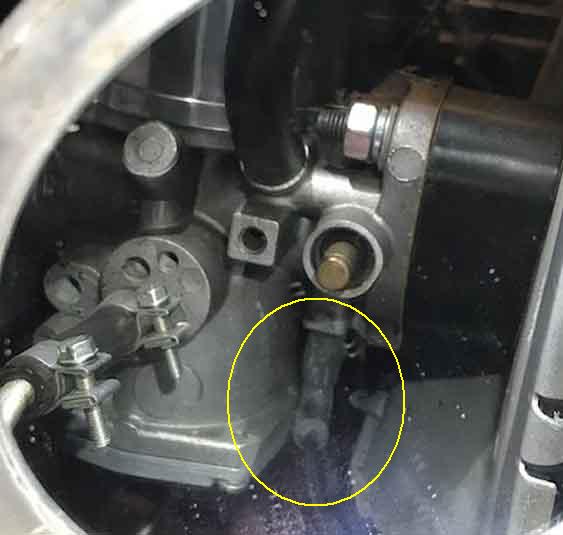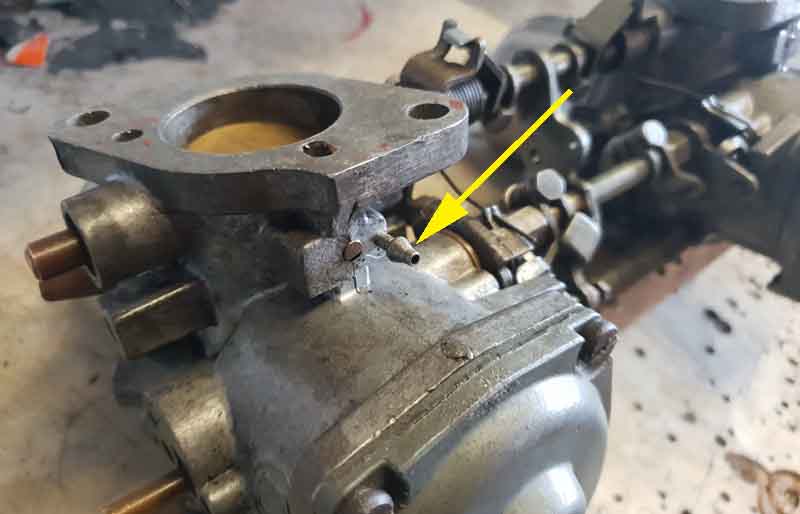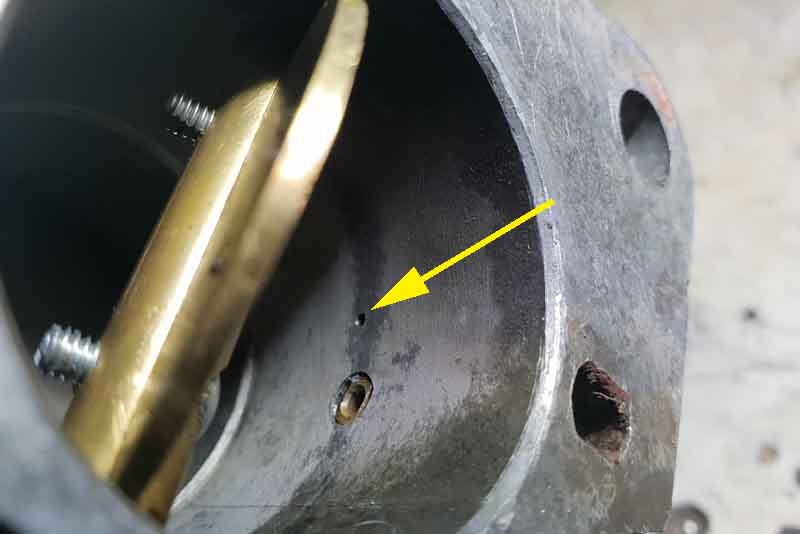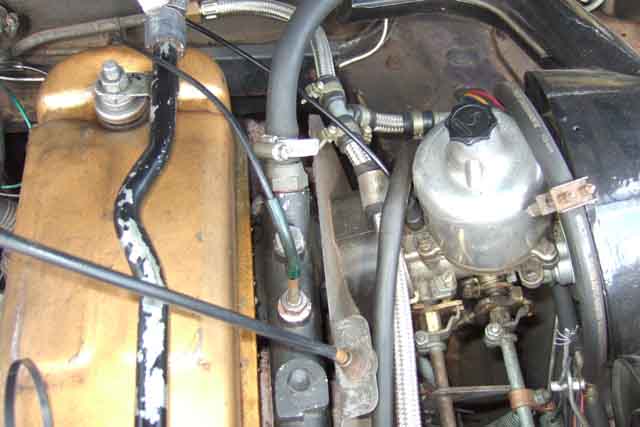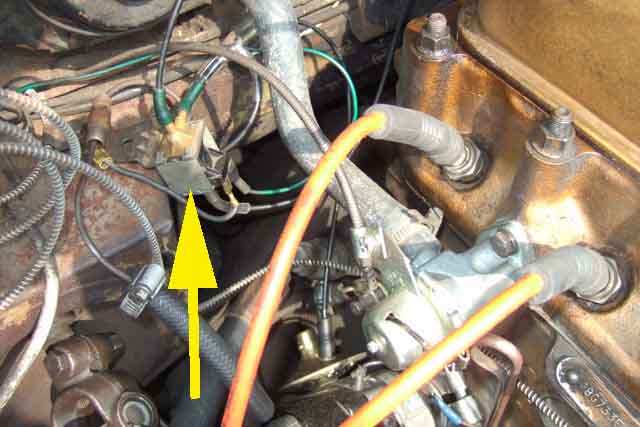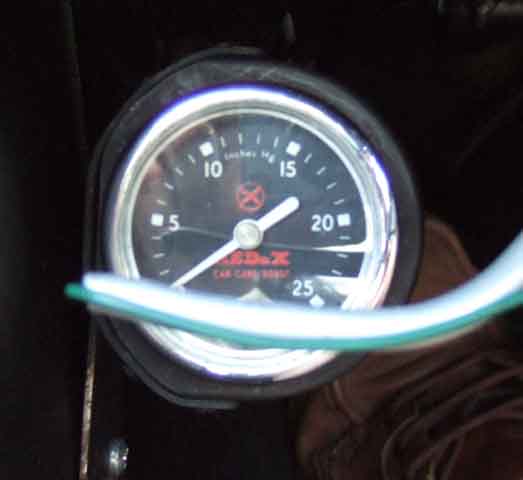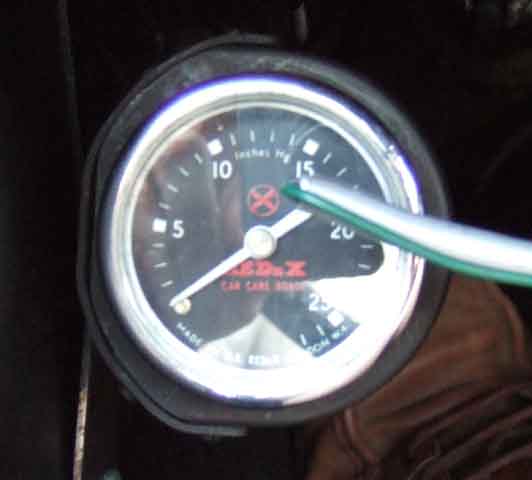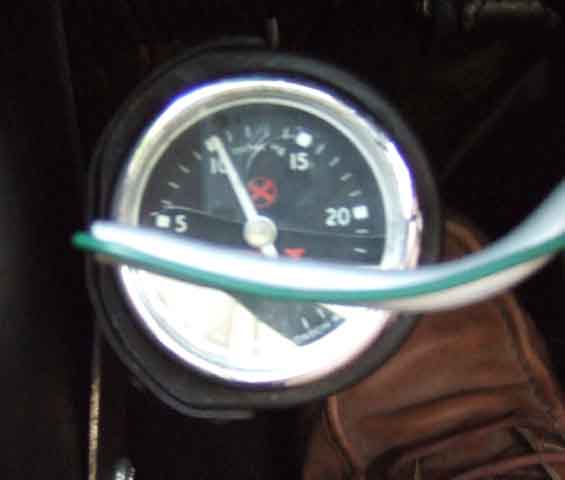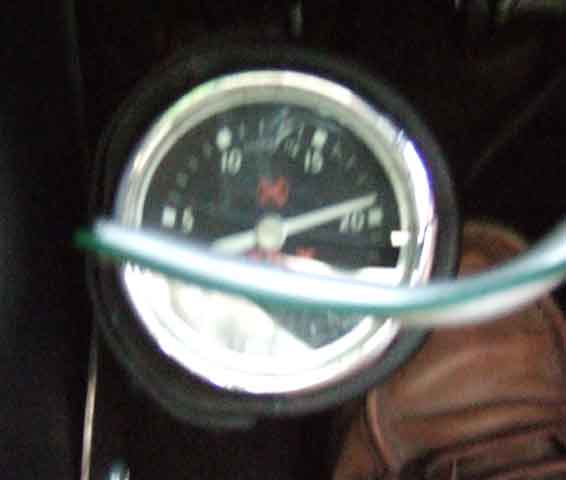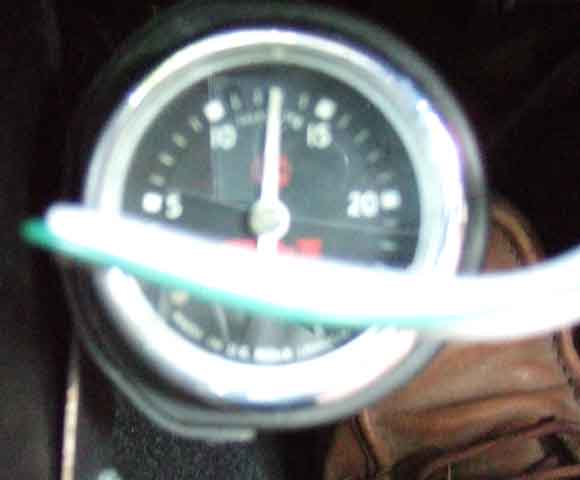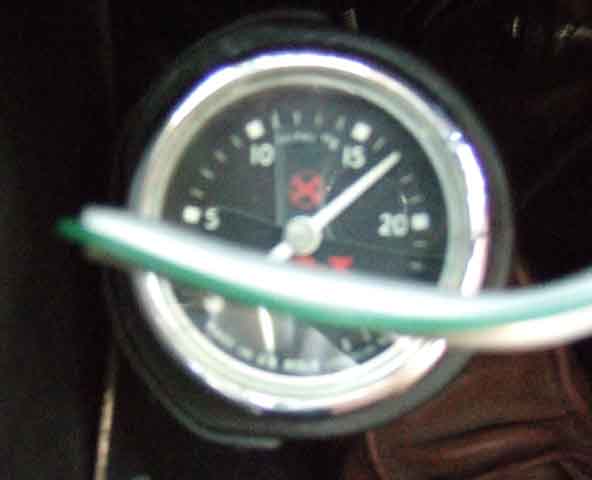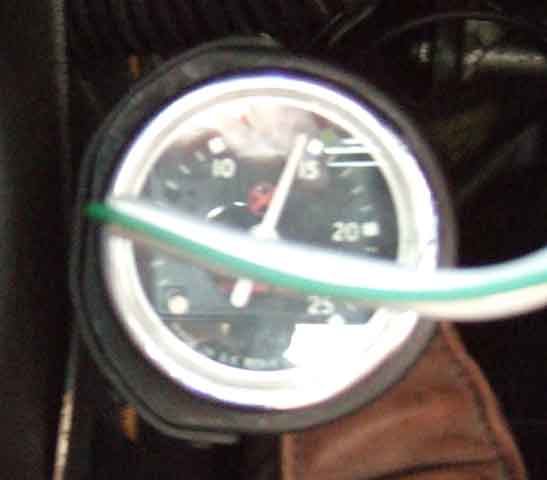HS4 butterfly at idle, port fully covered, putting it on the low-vacuum side of the butterfly:
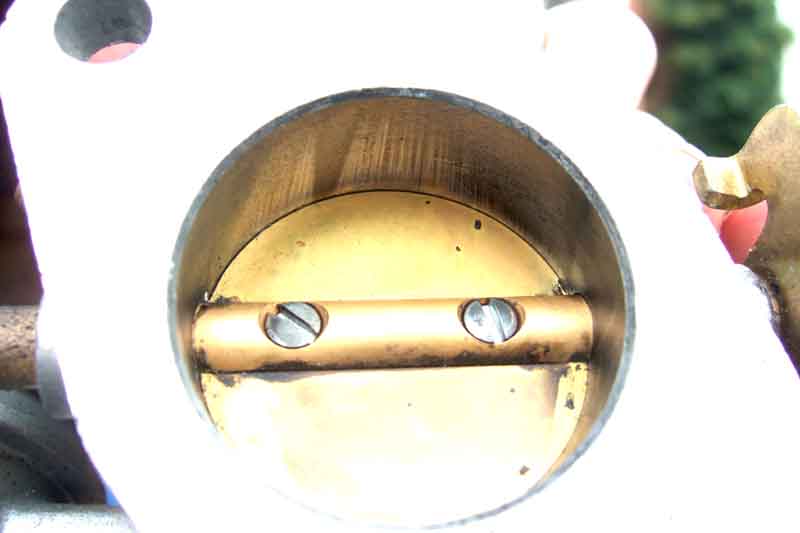
Butterfly just off idle, port (arrowed) fully uncovered. This effectively puts the port in the inlet manifold i.e. the high vacuum side, hence the vacuum signal now and at all wider throttle openings is the same for both carb and manifold vacuum sources.
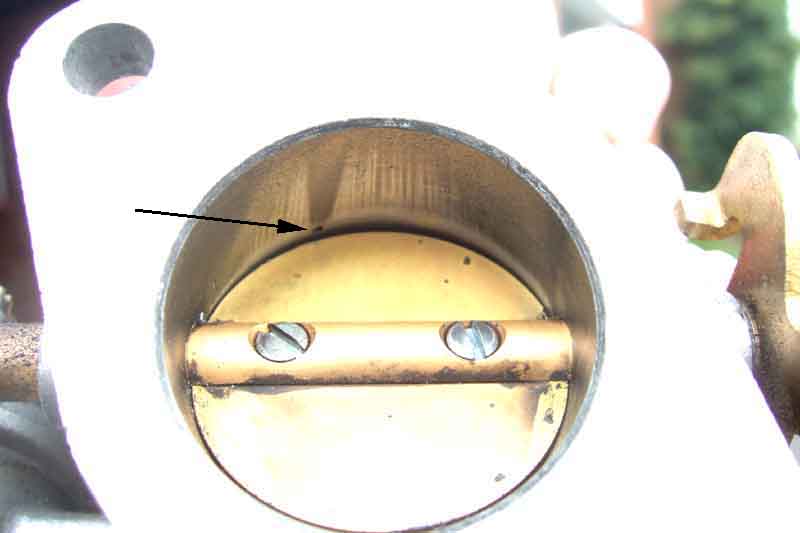
By comparison this 1974 (CB) MGB HIF carb has the port underneath the throat as the butterfly opens the other way: (Steve Henson-Webb)
And these from Steve Livesley, arrowed:
The larger port is the 'bypass idle' port that comes from the bridge immediately in front of the jet on HIF carbs, and prevents fuel pooling in the throat at idle. The vacuum port is covered by the butterfly at idle, being exposed to full manifold vacuum just as the butterfly opens. The bypass port is partially uncovered, which allows a small amount of mixture to bypass the butterfly and keep the throat clear. But it is a very small amount and carefully designed so that it is not enough to run the engine at normal idle speed, without the usual idle screw opening the butterfly a bit as well:
The brochure for RB cars shows the vac pipe going to the rear carb - possibly pre-production, but it has the later 'top-down' choke arrangement so a bit of a mystery:
Clausager shows this 75 with the vac pipe clearly going to the top of the front carb - probably an owner mod done incorrectly:
Another view of the same car shows the manifold port is capped off:
A 77 model with the vac pipe going to the port on the inlet manifold: (Clausager)
However Clausager indicate that 77 and later models had the final carb version with much shorter necks to the piston cover, which the above aren't. He isn't sure when these were fitted.
Connections to both carb and manifold vacuum sources ...
... both connected to the vacuum solenoid (a modified TCSA solenoid):
Crude pointer moving across the face of the vacuum gauge to indicate throttle pedal movement - no throttle to full throttle:
Steady 20 mph on the flat, 3rd gear - manifold vacuum left, carb vacuum right:
Steady 25 mph - manifold vacuum left, carb vacuum right:
Steady 30 mph - manifold vacuum left, carb vacuum right. To all intents and purposes at any higher speed or wider throttle opening the two readings are the same, just lower with more throttle:
